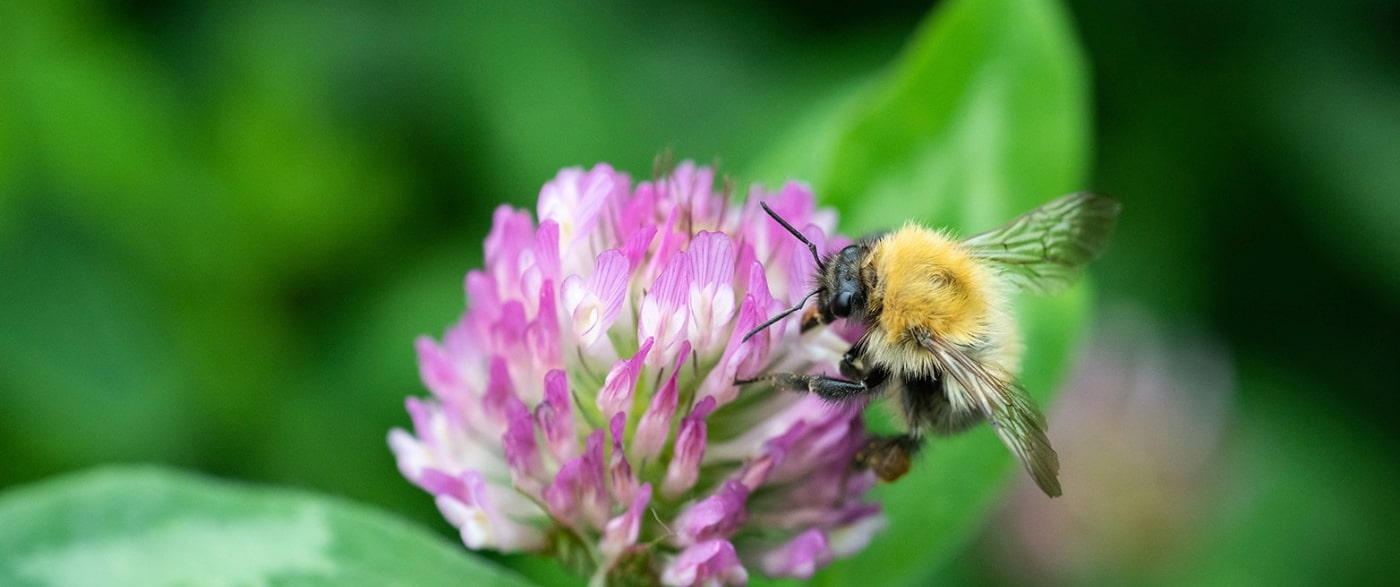Clover Innovation Supports Sustainable Livestock Farming in Wales

Researchers
Professor Leif Skøt
Dr David Lloyd
Professor Michael Abberton
Professor Athole Marshall
Dr Rosemary Collins
The Overview
Research and breeding programmes at Aberystwyth University’s Institute of Biological, Environmental & Rural Sciences (IBERS), have successfully generated highly persistent clover varieties. Increasing the use of these varieties in grassland agriculture provides significant economic and environmental benefits. AberLasting; the first commercial white clover variety was developed by researchers at IBERS, and was added to the UK National List in 2016. Persistent red clover varieties have also been developed, notably AberClaret, which accounts for 15% of red clover seed sales in the UK.
The Challenge
White and red clover are two of the most important forage legumes for temperate sustainable livestock production systems. They offer natural nitrogen fixation, reducing the need for industrial nitrogen fertilizer. They are superior to grasses in nutritional value, with a crude protein (CP) content of 18-19%, and they improve soil structure and fertility.
However, greater use in the UK has been limited by its lack of persistence in swards (the grassy surface of land). Increasing persistency therefore, particularly in mixtures with grasses is an important breeding target.
The Solution
Innovation has been central to IBERS's breeding programmes, supported by BBSRC, the Welsh Government and Innovate UK, and funded significantly by our strategic partner Germinal Holdings Ltd. (the largest UK owned forage seed wholesale company).
AberLasting
A major breakthrough was made in the development of the variety AberLasting, the first white clover-Caucasian clover hybrid. This variety, combining the best qualities of both parent species, is able to persist in environments that are too harsh for conventional clovers, partly due to a greater root biomass at depth. AberLasting is in commercial production, and is now being sold in four continents.
AberClaret
Historically, some producers have avoided red clover, due to a tendency for yields to drop off over time. To solve that problem, IBERS scientists developed varieties which focused on better persistence and improved yields, notably AberClaret, which produces high yields in the third and fourth harvest years.
AberClaret gave the highest dry matter yield in mixed swards in Year 4 (61%) in an experiment comparing 12 red clover varieties. This resulted in greater CP yields on an area basis, highlighting the importance of red clover persistence to the feeding value of grass/red clover swards.
The Impact
Economic and Commercial Impact
Societal and Environmental Benefit

Get in touch
As a University, we’re always keen to share our knowledge and expertise more widely for the benefit of society. If you’d like to find out more or explore how you can collaborate with our researchers, get in touch with our dedicated team of staff in the Department of Research, Business and Innovation. We’d love to hear from you. Just drop an e-mail to:
Research Impact Case Studies | Research Theme: Environment
